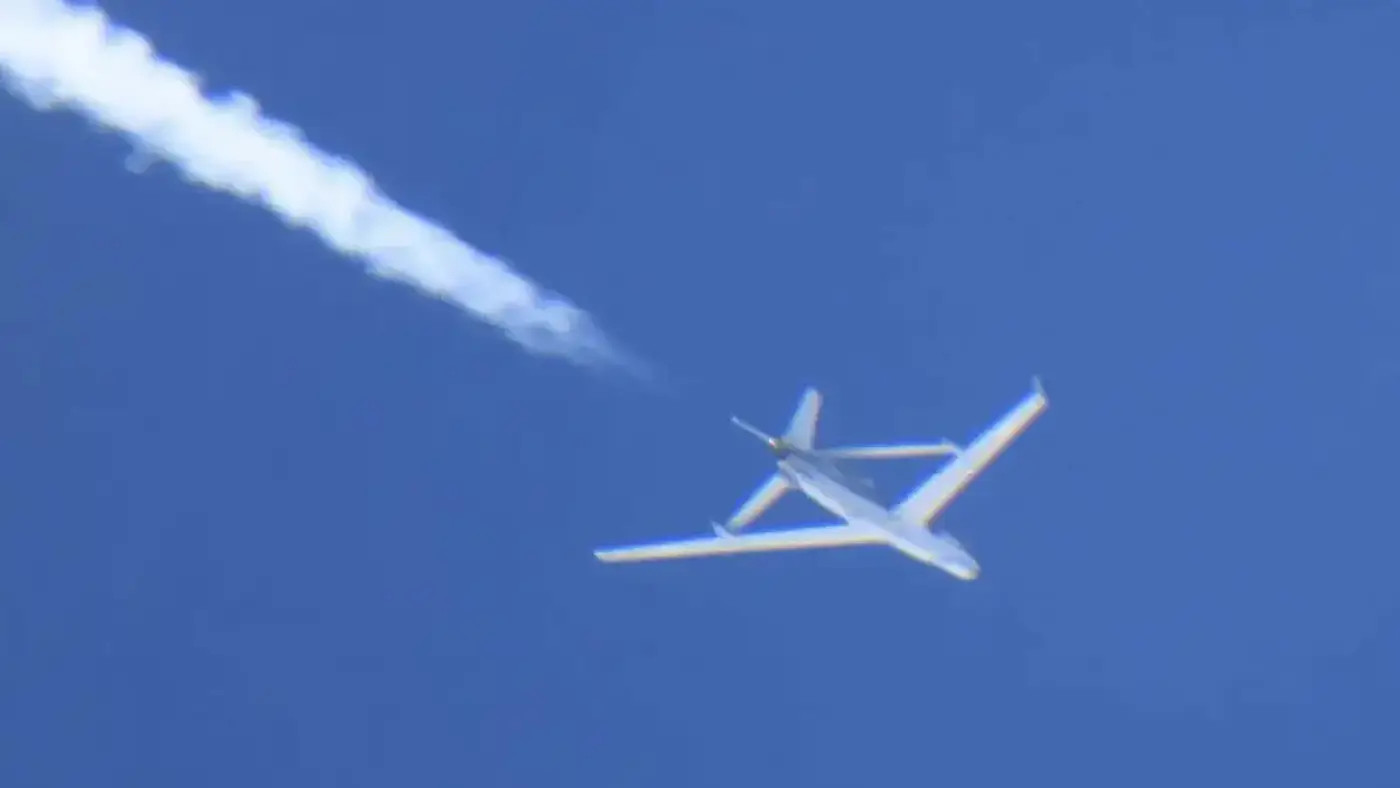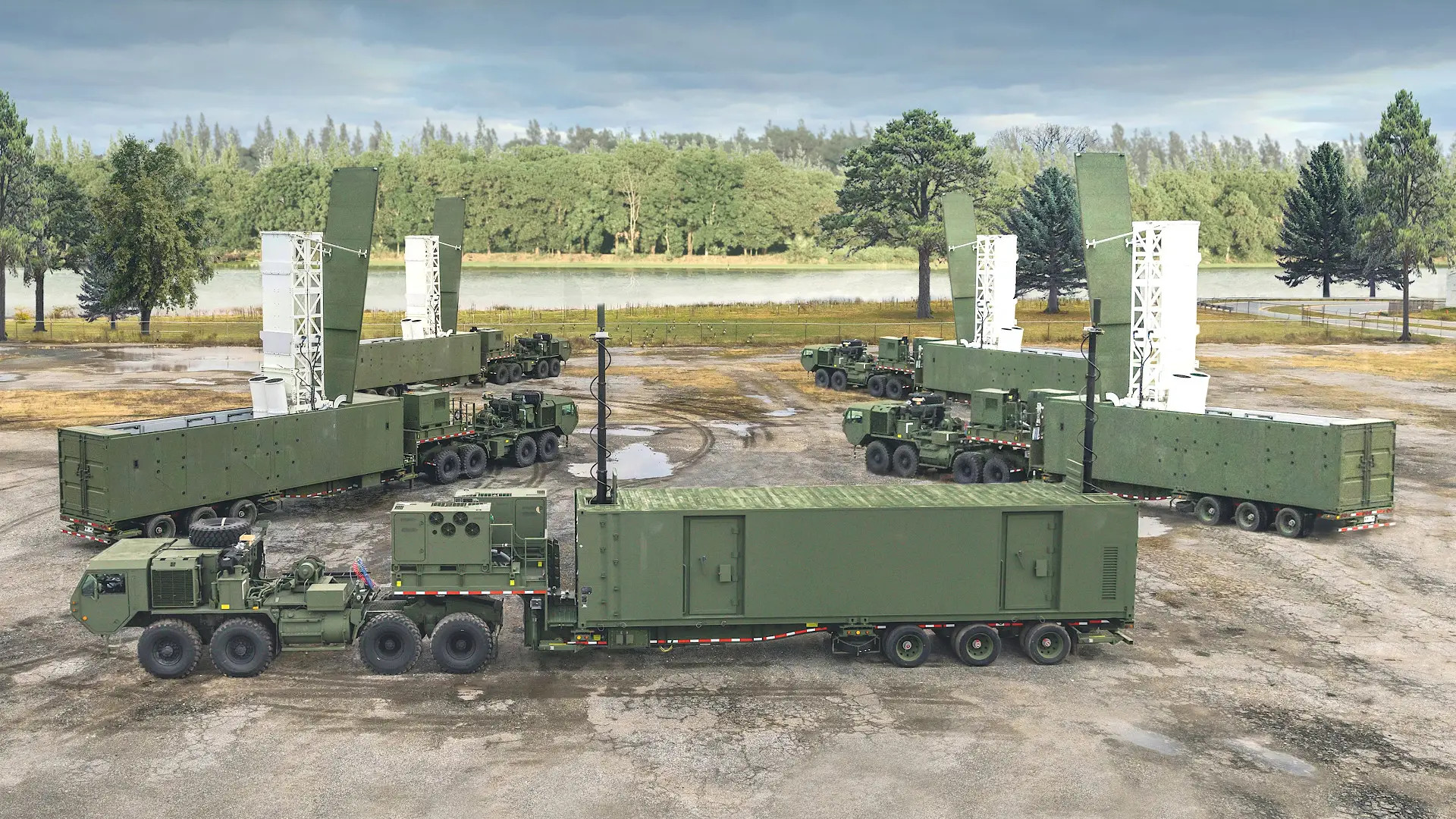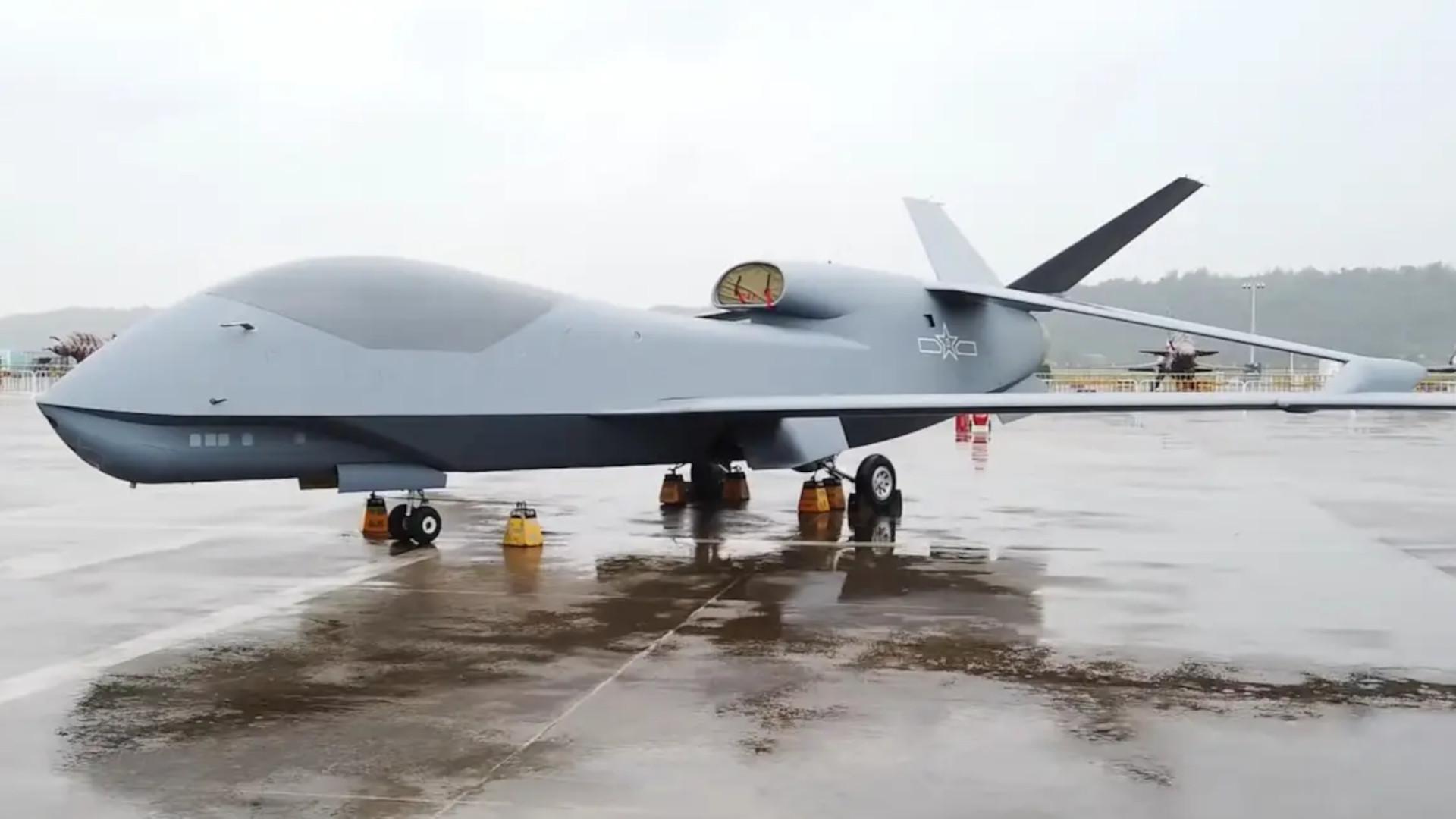A Chinese People’s Liberation Army WZ-7 Soaring Dragon was recently spotted for what looks to be the first time flying over the northwestern end of the South China Sea near the Philippines. The appearance of the high-flying long-range reconnaissance drone in the region comes as the U.S. Army’s new Typhon ground-based missile system has made its inaugural Indo-Pacific deployment to the northern Philippine island of Luzon. There has also been a major spike in friction in recent months in the dispute between China and the Philippines over control of the Scarborough Shoal, a grouping of islets and reefs that lie to the west of Luzon.
Raffy Tima, a reporter for Philippine outlet GMA News, was the one to catch the WZ-7, which has a unique and easily recognizable joined-wing design, flying recently over the West Philippine Sea, a portion of the South China Sea to the northwest of the Philippine archipelago. Tima was in the area observing work being done as part of the Philippine Bureau of Fisheries and Aquatic Resources (BFAR) Livelihood Activities to Enhance Fisheries Yields and Economic Gains from the West Philippine Sea (LAYAG-WPS) project, the goal of which is to help uplift local fishing communities. BFAR just launched the LAYAG-WPS initiative earlier this week.

In addition to this being the first known appearance of a WZ-7 flying over the West Philippine Sea, this looks to be the first hard evidence that these drones are operating over the South China Sea, in general. There have been strong indications already that Soaring Dragons have been flying in this region since at least late 2022. This includes the sighting of a WZ-7 apparently heading west over China’s southeastern Guangdong province, which lies right on the northern edge of the South China Sea, that year. Satellite imagery has also shown WZ-7s on the ground at Shadi Air Base in Guangdong.
The main hub for WZ-7 operations is Shuangliao Air Base in northeastern China. Since the type first entered service in the late 2010s, Soaring Dragons have been active over and around the Taiwan Strait, in Chinese airspace along the country’s border with India, and off the coasts of Japan. Just in March of this year, a WZ-7 conducted the first known sortie over the Sea of Japan, a flight that also looked to have involved flying through Russian and/or North Korean airspace, as you can read more about here.

Details about the performance specifications and other capabilities of the WZ-7, examples of which are now in People’s Liberation Army Air Force (PLAAF) and Navy (PLAN) service, are limited. As The War Zone wrote when one of these drones conducted its sortie over the Sea of Japan last month:
“Publicly available estimates say its range is around 4,350 miles and its service ceiling is upwards of 60,000 feet. Its endurance could be at least 10 hours, but how long it may actually be able to stay aloft could be significantly longer. As The War Zone has noted in the past, the drone’s specifications may come up short of a true high-altitude, long-endurance (HALE) drone design like the U.S. RQ-4 Global Hawk, examples of which are now also in Japanese service. This would reflect the WZ-7’s more regional focus, which fits with China’s overall military focus, while the larger Divine Eagle could fill the higher-end segment of the HALE category.”
“The WZ-7 is also understood to be primarily intended for intelligence, surveillance, and reconnaissance (ISR) missions. However, the exact configuration of the drone’s sensor suite, which could be modular/interchangeable to some degree, is unknown.”
With its high perch, the WZ-7 offers an intelligence, surveillance, and reconnaissance (ISR) platform with a very long line of sight. This already looks to be leading the Soaring Dragon to be particularly heavily employed for long-duration over-water surveillance missions like shadowing foreign warships and providing additional battlespace awareness for PLAN surface action groups. As already noted, these drones are used for overland missions, too. Depending on the configuration and capabilities of its sensor suite, the WZ-7 might also be able to stare obliquely into certain areas from international airspace – like Luzon from the West Philippine Sea.
As previously mentioned, there are multiple very immediate reasons why the PLA might want to send one of its Soaring Dragons to the skies over the West Philippine Sea now.
The U.S. Army’s deployment of elements of a Typhon ground-based missile system, which can fire Tomahawk cruise missiles and SM-6 multi-purpose missiles, to Luzon earlier this month, has sent signals throughout the region, particularly toward China. Though ostensibly deployed to take part in an exercise, Typhon’s presence in the Philippines puts it right in Beijing’s backyard and within reach of the southeastern end of the Chinese mainland. Typhon can hold targets on land and at sea at risk within a bubble extending roughly 1,000 miles in any direction from where it is deployed. The Army is looking to more permanently base Typhons, as well as other ground-based long-range strike assets, close to China. You can read more about Typhon, its capabilities, and the significance of it being sent to the region here.


In addition, friction between China and the Philippines over the Scarborough Shoal, which has included increasingly aggressive actions on the part of the Chinese Coast Guard and Maritime Militia ships in the region, has been escalating to very worrying degrees in recent months. Authorities in Beijing have and continue to reject a 2016 international tribunal ruling that affirmed Manila’s claims to the shoal. The Chinese government has long claimed the bulk of the South China Sea to be its sovereign territory, a position that the vast majority of the international community has rejected and that has caused disputes with countries throughout the region beyond just the Philippines.
Beyond these more current events, the northeastern end of the South China Sea is highly strategic in general. This body of water is linked to the Taiwan Strait, as well as waterways like the Bashi Channel between the Philippines and Taiwan that feed into the broader Western Pacific. That latter corridor is particularly important for Chinese submarines and surface warships heading into the broader Pacific.
China’s interest in surveilling the West Philippine Sea and adjacent areas is hardly new. In 2022, what strongly appeared to be a Chinese high-altitude surveillance airship was also spotted to the west of Luzon. The PLA’s use of high-altitude balloons and other lighter-than-air craft for ISR and other missions became a cause celebre after one of its spy balloons was shot down after passing across the United States in early 2023. That was quickly followed by the downing of three more still unidentified objects in U.S. and Canadian airspace. Earlier this year, fishermen recovered what might have been the wreckage of another spy balloon off the coast of Alaska, which was subsequently turned over to U.S. authorities. The War Zone has been closely following China’s development of lighter-than-air capabilities for years now.
A still unknown stealthy flying wing-type aircraft was also observed flying in the same general area back in 2021, further underscoring its strategic importance.
When it comes to WZ-7 sorties in the northern end of the South China Sea, these would also just provide valuable additional situational awareness in this area. This in many ways would mirror flights by U.S. Navy MQ-4C Triton HALE drones, as well as other U.S. crewed ISR platforms, in the northern end of the South China Sea that occur regularly for the same general reasons.
More broadly, the recent WZ-7 sortie underscores the PLA’s still growing use of an increasingly diverse range of uncrewed aircraft to perform a wide array of missions, and to do so further and further away from the Chinese mainland.
Overall, the WZ-7 looks to be an increasingly key long-range ISR platform for the PLA, and the scale and scope of how these drones are being employed are still expanding.
Contact the author: joe@twz.com
